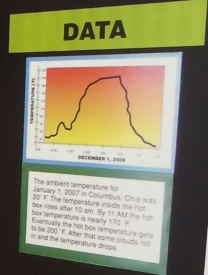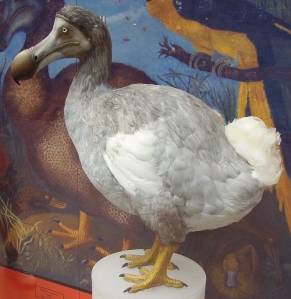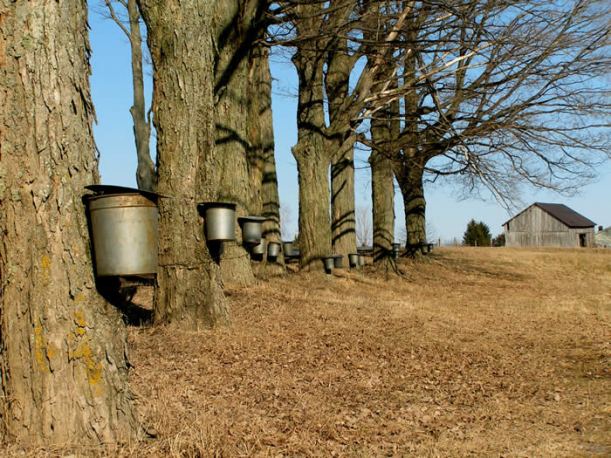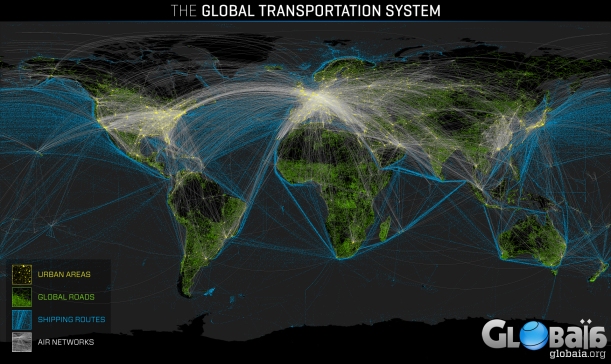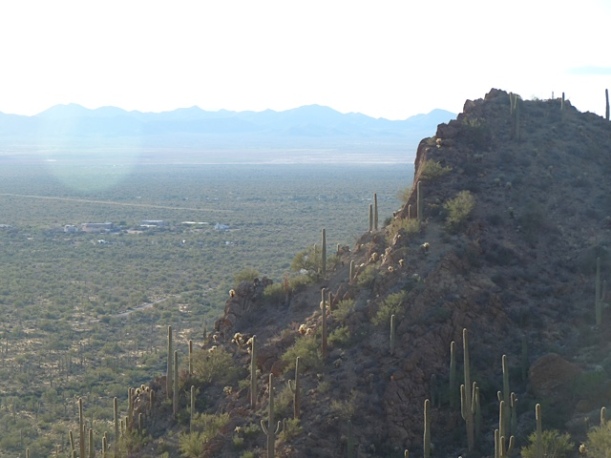Like many tales of disappointment, this story takes place in Walmart. I had just left behind the comforting, monotonous aisles of the grocery section to gather various “non-food items” from the rest of the store. Crossing into housewares to pick up a dish drainer, I came across a prominent and colorful display stand selling tri-fold corrugated display boards, made by Elmer’s, the glue company. As a scientist and educator, I have a sentimental fondness for such a science fair essential, but I was a little curious as to why Walmart was pushing them during summer vacation. But what really grabbed my attention was the sample poster on the side of the display stand:
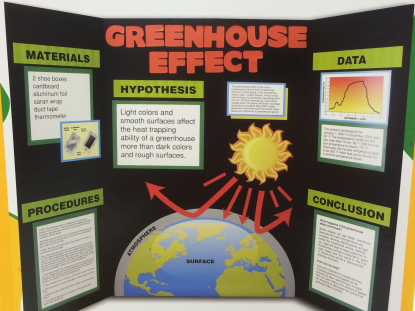 Greenhouse Effect. This simple phrase shocked me out of my Sunday morning Walmart malaise with a surprising rush of conflicting feelings. I was excited to see the topic mentioned in such a public place, and on a product for students, but my elation was tempered with anxiety about how the topic would be presented on the poster. But I was positively shocked, and morbidly intrigued, when I noticed the invitation above the poster:
Greenhouse Effect. This simple phrase shocked me out of my Sunday morning Walmart malaise with a surprising rush of conflicting feelings. I was excited to see the topic mentioned in such a public place, and on a product for students, but my elation was tempered with anxiety about how the topic would be presented on the poster. But I was positively shocked, and morbidly intrigued, when I noticed the invitation above the poster:

My mind raced in an undercaffeinated educator’s panic. At first I thought they must mean, you know, “Make-a-poster-like-this-later!” Then I noticed that every single word and detail was clearly visible on the poster. We are definitely being invited to make this specific poster later. That seemed sort of … wrong.
I imagined a slightly nerdy pre-teen, maybe nine or ten, intrigued by the neatly arranged die-cut letters and cool picture of the Sun and Earth. Let’s call him Austin. If Austin were indeed able to cajole his dad or mom into this whole “Snap-A-Pic, Make-it-later!” scheme, if he went home and diligently recreated this poster, what would Austin learn about science?
I moved closer to find out, and I almost wish I hadn’t. I have rarely found so much wrong, on so many levels, in so little space. If wrongness had mass, the high concentration of wrongness on that display stand, its wrongness density, would have made it so heavy that it would have been impossible to ever unload it from whatever truck delivered it to my neighborhood Walmart. In fact, the truck never would have made it through the weigh station on I-71. That would have been a blessing. But alas, wrongness is weightless.
So what is wrong with this picture?
Distressingly, it obviously and boldly encourages plagiarism and discourages curiosity. Science project due in class next week? Interested in the greenhouse effect and climate change, Austin? Don’t bother doing any background research. Why design and conduct an experiment of your own when you can just “Snap-A-Pic, Make-it-later?” Austin would learn that doing science is basically paint-by-numbers, a craft project free from intellectual effort, but suitable for display. This is so wrong.
Worse, the actual “science” contained in the poster is disastrously, irredeemably bogus. In fact, it is so bogus, in so many ways, that if bogusness had mass… you get the picture. In the interests of brevity, I will confine myself to the three biggest problems of bogusness found on the poster.
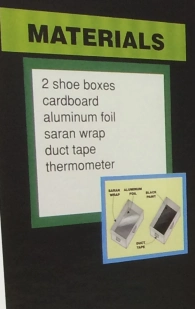
First, while the poster correctly describes the heat trapping effects of atmospheric greenhouse gases (but without any direct mention of human CO2 production), the project described on the poster, the hypothesis and the procedure, does not actually address the greenhouse effect. Instead, the project examines albedo, comparing heat released by absorptive (black paint) vs. reflective (aluminum foil) surfaces. Greenhouse gases are not manipulated in the experiment – no alka seltzer, no water vapor. Now changes in albedo (especially due to loss of reflective polar ice and snow) are an important positive feedback into Earth’s warming greenhouse, but the greenhouse effect and albedo are in fact separate things. From this, Austin would learn that science is a game of bait-and-switch. Scientists can claim to be investigating one thing, when really they are studying something else. But as long as there are data and graphs and hypotheses and tests involved, it’s science. This is bogus.
Second, the poster sets up two alternative treatments (the light box and the dark box – don’t get me started on replication!) but then does not make any comparisons. The graph presents temperature data for one treatment only, and it does not even identify which one. A comparative experiment without any comparisons tells us nothing about how the natural world works. Zilch! Nada! Nil! Austin would come away confused about the purpose of an experiment and how it relates to saying anything about the natural world. Genuinely bogus!
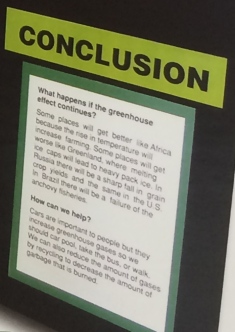
Finally, the “Conclusions” are utterly unrelated to the experiment, often false, and incredibly poorly written. The claim that an increased greenhouse will increase farm production in Africa is completely counter-factual, and the notion that melting ice caps in Greenland will lead to heavy pack ice is positively oxymoronic. Finally, while carpooling, public transportation, walking, and recycling are all good things environmentally speaking, they are not nearly sufficient for achieving meaningful greenhouse gas reductions. But then again, as I mentioned above, despite the title the science on the poster actually has nothing to do with the greenhouse effect. Bogus maximus.
So in the end, if Austin actually were to “Snap-A-Pic, Make-it-later,” he would learn that science is just a meaningless mindfuck of double speak; that our conclusions have nothing to do with our data, which in turn have nothing to do with our hypotheses, which in turn have nothing to do with the alleged topic of our research, and the whole shebang is just copied from the work of others, anyway. This lesson, if taken to heart, could kill Austin’s interest in pursuing real science. Worse, he might come away thinking there is really no way to distinguish reasoned claims from utter bullshit. I imagine Austin later in life, saying proudly, even defiantly, “I am not a scientist!” Maybe he will become a teacher, or a presidential candidate.
I shuddered at the thought – right there in the aisle at Walmart.
Then I saw the other sample poster on the opposite side of the display.
PLANT BIOLOGY
I couldn’t bear to look…

